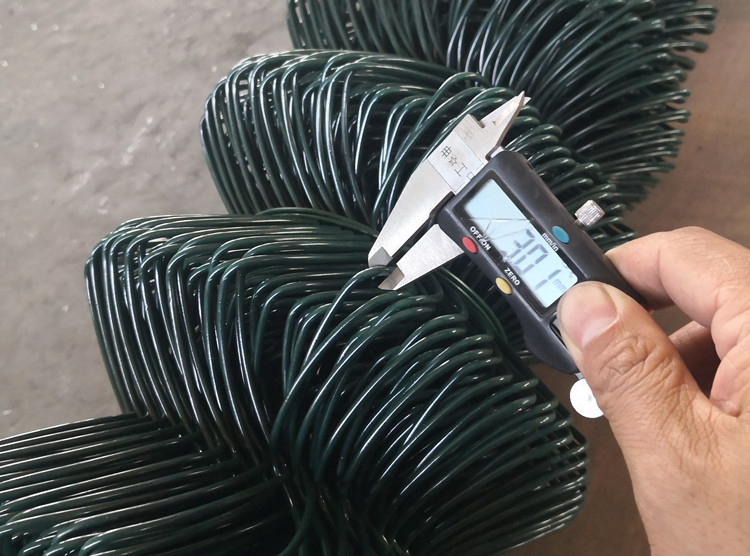Aug . 07, 2024 14:11 Back to list
Durable Concrete Reinforcement Mesh Panels for Enhanced Structural Integrity and Stability in Construction Projects
Understanding Concrete Reinforcement Mesh Panels A Comprehensive Overview
Concrete reinforcement mesh panels play a pivotal role in modern construction, ensuring the structural integrity and longevity of buildings and other structures. These panels are essential in various applications, from residential homes to large-scale industrial projects. In this article, we will explore what concrete reinforcement mesh panels are, their types, benefits, and applications in the construction industry.
What Are Concrete Reinforcement Mesh Panels?
Concrete reinforcement mesh panels, often simply referred to as mesh panels or wire mesh, are constructed using a lattice of steel bars or wire. These panels are designed to be embedded within concrete to enhance its tensile strength and prevent cracking. The mesh comes in different configurations, including welded wire mesh and traditional rebar cages, which can be cut and shaped to fit specific project requirements.
Types of Reinforcement Mesh Panels
1. Welded Wire Mesh This type consists of steel wires that are welded together at their intersections, creating a uniform grid. It is widely used in slab-on-grade applications, walls, and driveways. The welded nature of this mesh provides excellent tensile strength and is often more convenient to handle than individual rebar.
2. Reinforcing Bars (Rebar) Cages Rebar cages are made from individual steel bars that are tied together, usually with binding wire. This type of reinforcement is commonly used in heavier construction tasks, such as beams and columns, where greater tensile strength is required.
3. Composite Mesh As sustainability becomes more important in construction, composite materials are being used in reinforcement meshes. These may include a combination of steel and fiber materials, offering benefits such as reduced weight and enhanced corrosion resistance.
Benefits of Concrete Reinforcement Mesh Panels
1. Enhanced Strength and Durability The primary purpose of using reinforcement mesh panels is to improve the tensile strength of concrete, which is inherently strong in compression but weak when pulled or stretched. The inclusion of mesh helps to distribute loads evenly and minimizes the risk of cracking.
2. Cost-Effectiveness While the initial investment in reinforcement materials might seem significant, they significantly reduce the maintenance costs associated with concrete structures over time. Reinforced concrete typically lasts longer and requires less frequent repairs.
concrete reinforcement mesh panels products

3. Versatility Concrete reinforcement mesh panels can be used in a variety of applications, from small residential projects to large infrastructure developments like bridges and highways. This versatility makes them a vital component of the construction industry.
4. Simplified Installation Mesh panels are relatively easy to handle and install compared to traditional rebar, which can streamline the construction process and reduce labor costs.
Applications of Concrete Reinforcement Mesh Panels
Concrete reinforcement mesh panels are essential in numerous applications, including
- Foundations They provide essential support for building foundations by preventing cracking and settling.
- Floors and Slabs Used in the construction of concrete floors, mesh panels help ensure a durable and long-lasting surface.
- Walls Reinforcement in walls helps improve stability and resistance against lateral forces from wind and seismic activity.
- Pavements and Driveways In external applications, mesh panels prevent cracking due to temperature fluctuations and heavy loads.
Conclusion
Concrete reinforcement mesh panels are a cornerstone of modern construction, providing strength, durability, and cost-effectiveness. As the industry continues to evolve, the development of new materials and technologies promises to enhance the functionality of these essential components. Understanding the importance and applications of concrete reinforcement mesh can help construction professionals make informed choices, ultimately leading to safer and more robust structures.
-
Hop Dipped Galvanized/PVC Coated Temporary Fence - Anping County Xingzhi Metal Wiremesh Products Co., Ltd.|Temporary Fencing Solutions, Durable Security Products
NewsJul.30,2025
-
Hop Dipped Galvanized/PVC Coated Temporary Fence-Anping Xingzhi|Durability&Cost-Effective
NewsJul.30,2025
-
Hop-Dipped Galvanized PVC Fence - Anping Xingzhi | Durable, Quick Deployment
NewsJul.30,2025
-
Hop Dipped Galvanized/PVC Coated Temporary Fence - Anping County Xingzhi|Temporary Fencing, Durable Security, Customization
NewsJul.30,2025
-
Hop Dipped Galvanized PVC Coated Temporary Fences - Anping County Xingzhi|Durable Corrosion Resistance, Quick Installation
NewsJul.30,2025
-
Hop Dipped Galvanized / PVC Coated Temporary Fence - Anping County Xingzhi Metal Wiremesh Products Co., Ltd|Durable Temporary Fencing&Versatile Applications
NewsJul.30,2025



